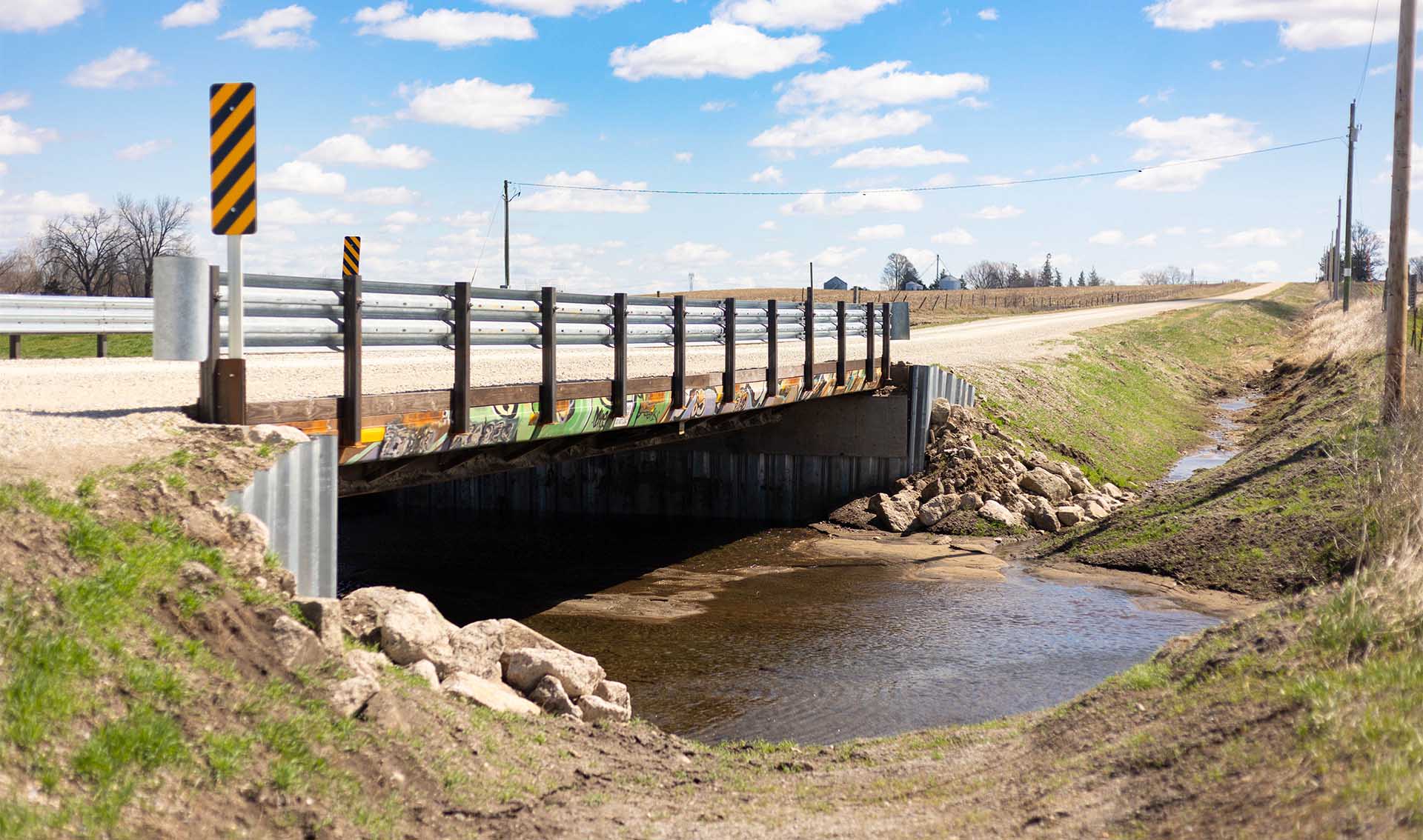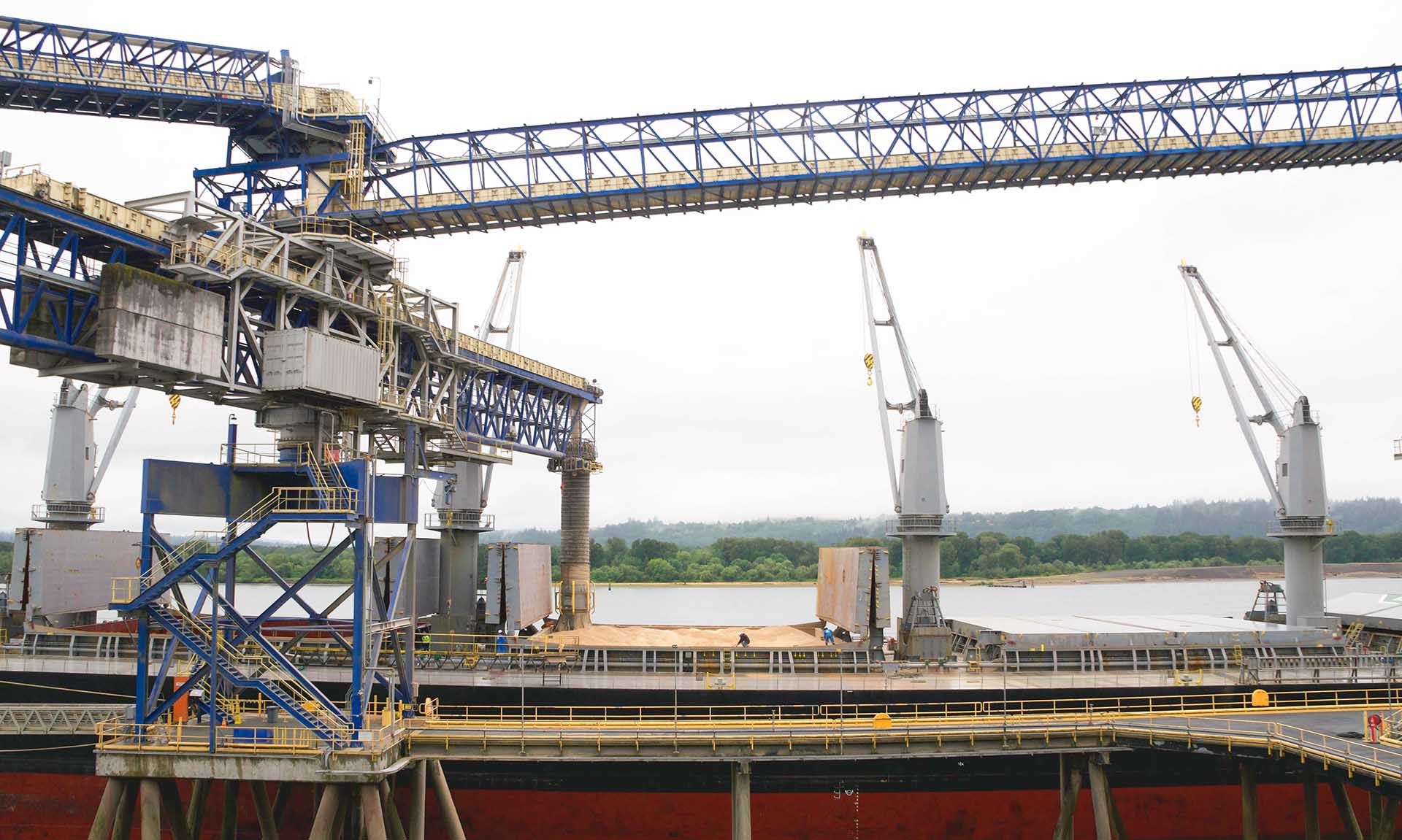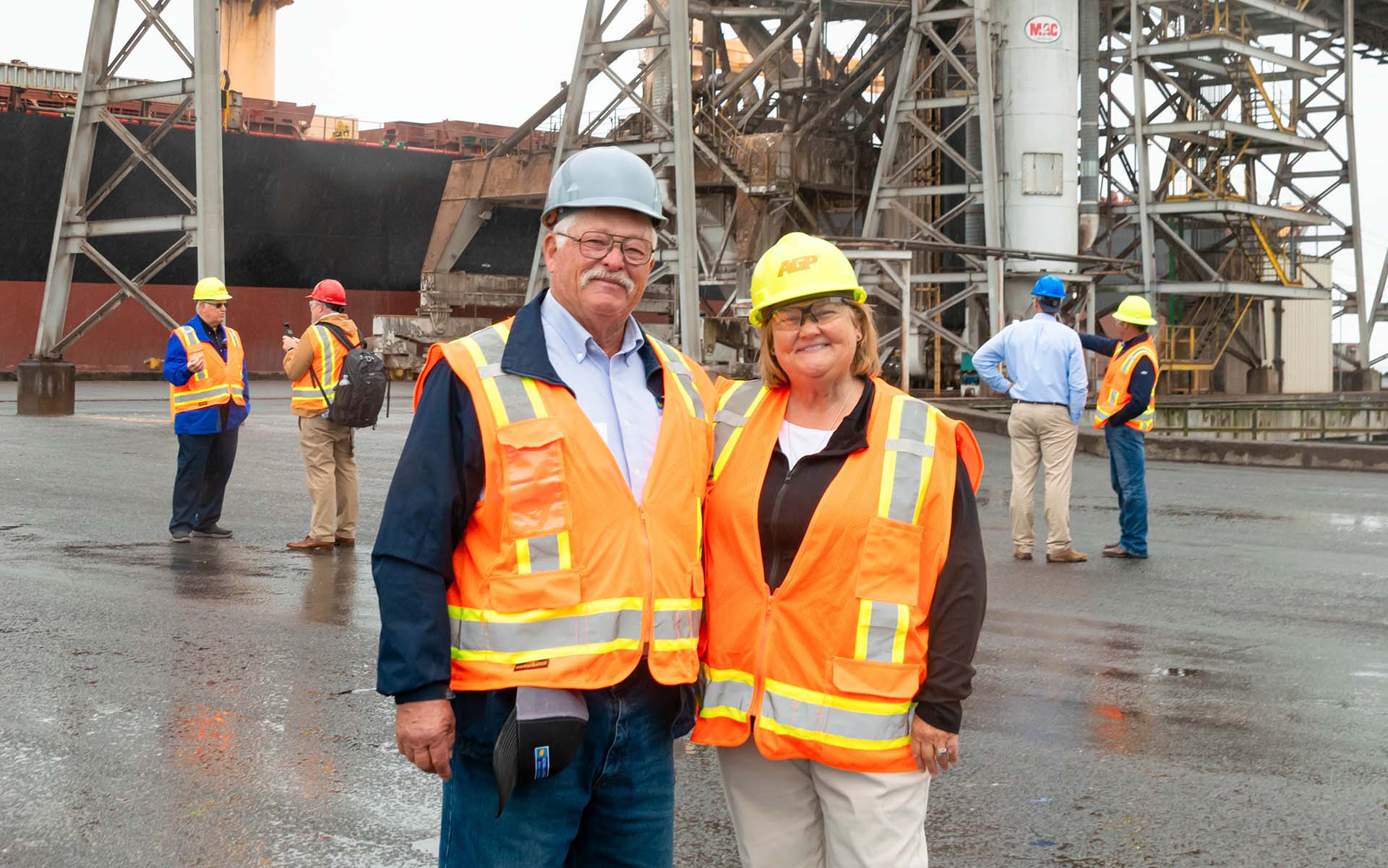
(Photo: Iowa Soybean Association / Joclyn Bushman)
Top priorities in soy transportation
October 1, 2024 | Bethany Baratta
From row to road and rail to river, the Soy Transportation Coalition (STC) is focused on projects that increase efficiency in transporting soybeans near and far.
TEMCO project at Port of Kalama
The Port of Kalama (in Kalama, Washington) and Tacoma Export Marketing Company (TEMCO), a joint venture by Cargill and CHS, are in the process of expanding the rail unloading and staging infrastructure at the terminal.
Expanding rail lines will increase efficiency by 25 to 30%, especially during October through January, which is the key export window for soybeans.

“It’s the same concept as keeping the combines rolling and not having it stop because you don’t have a truck or wagon to offload that crop,” says Mike Steenhoek, STC's executive director.
The United Soybean Board, Soy Transportation Coalition, Iowa Soybean Association and other state soybean associations have committed funding to this project.
Great Lakes/St. Lawrence Seaway
The DeLong Co. Agricultural Maritime Export Facility on Jones Island is one of the first on the Great Lakes–St. Lawrence Seaway system to handle various agricultural commodities via truck, rail and international vessel, including dried distillers grains with solubles (DDGs). This facility is expected to open Wisconsin’s maritime and agricultural economies to new international markets.
“Though this facility will never rival the Pacific Northwest or the Mississippi River/Gulf, this is another way to diversify our supply chain,” Steenhoek says.
The Soy Transportation Coalition and Wisconsin Soybean committed funding to this project.
Railcar bridges
A project is underway in Buchanan County, in northeast Iowa, to use six railroad flat cars to replace a rural bridge. This was one of the efforts highlighted in STC’s report, “Top 20 Innovations for Rural Bridge Replacement and Repair”, which promotes cost-effective approach to replacing and repairing rural bridges without compromising safety.
The cost of the county to replace the bridge using the railcars is $300,000, saving the county and its taxpayers more than $500,000.
“My crystal ball says that the local, state and federal governments aren’t likely going to be winning the lottery anytime soon to replace these rural bridges in our country, so if we’re going to be constrictive on the funding availability side, we’d better be serious on the cost containment side,” Steenhoek says. “This is an excellent way of doing it.”
View from farmers and other soy stakeholders
April Hemmes, United Soybean Board Director, Farmer from Hampton
Why are investments in soy transportation important?
I really love to see when states are involved, STC, private companies and the United Soybean Board and we’re putting our dollars together.
Eighty percent of that bean is meal, and with more weight on the oil now with SAF (sustainable aviation fuel) and renewable diesel, we really need more places to increase capacity like they are here in the Port of Grays Harbor to get rid of that meal. They don’t store the soybean meal that long here, they get it in and then get it out. To have the capacity to do that is great and knowing that we’ve really come together to make that happen really makes me proud that we’re investing dollars like that.

What might farmers back at home be surprised to learn?
The biggest surprise to me is that our checkoff dollars are going to literally feed people around the world. So what comes in here is going to go to Southeast Asia and then goes to feed their livestock there — or to humans because of tempeh and tofu. Just knowing that we are a part of that is unbelievable. And what a timely investment this is because of the ramping up of all the crush facilities.
Ten years from now, you’re visiting the Port of Grays. What does it look like?
I really hope that the next port is done, it’s at full capacity and they need to build more. Wouldn’t that be a great thing?
That’s the great thing about soy. We’re always looking for the next outlet, the next thing. And to know that could be a possibility is great.
Xiaoping Zhang, U.S. Soybean Export Council (USSEC) Regional Director for Greater China
Why is American farmer soybean investment important to buyers in your area?
The investment in upgrading U.S. export logistics will continue to increase U.S. Soy’s competitiveness, especially as grain shipments become vulnerable to climate-related events like the Panama Canal restrictions, and geopolitical conflicts like safety threats in the Suez Canal. These passages serve as key logistic points connecting U.S. farmers with the world market.
The expansion of the Grays Harbor facility will help build customers’ confidence in U.S. Soy’s supply reliability. In some cases, Chinese buyers found it difficult to source soy from the Pacific Northwest area where export facilities were fully booked with exports for various commodities, especially for soy. With increasing competition from South America, more logistic enhancement in the U.S. Pacific Northwest, with its proximity to Asia, will help win more business, especially from China, the number one destination for U.S. Soy.
Lyndsey Erb, USSEC Director of Industry Affairs
What does this investment — by the Soy Transportation Coalition, multiple state checkoff associations, the United Soybean Board, AGP — say about U.S. soy’s willingness to do business with partners around the world?
U.S. Soy offers its customers a sustainable, reliable, high-quality supply. U.S. farmers consistently show up for their customers, growing soy that is efficiently delivered to markets around the world. The investments by American farmers, exporters and like-minded associations to infrastructure further demonstrate that commitment. USSEC and the U.S.
Soy value chain build relationships with customers to ensure mutually beneficial trade.
Back